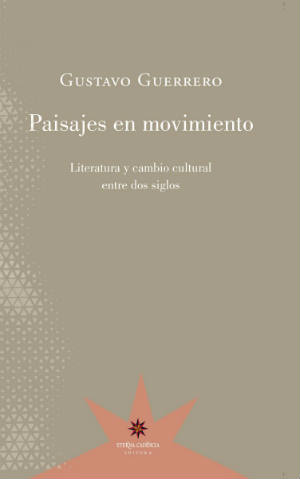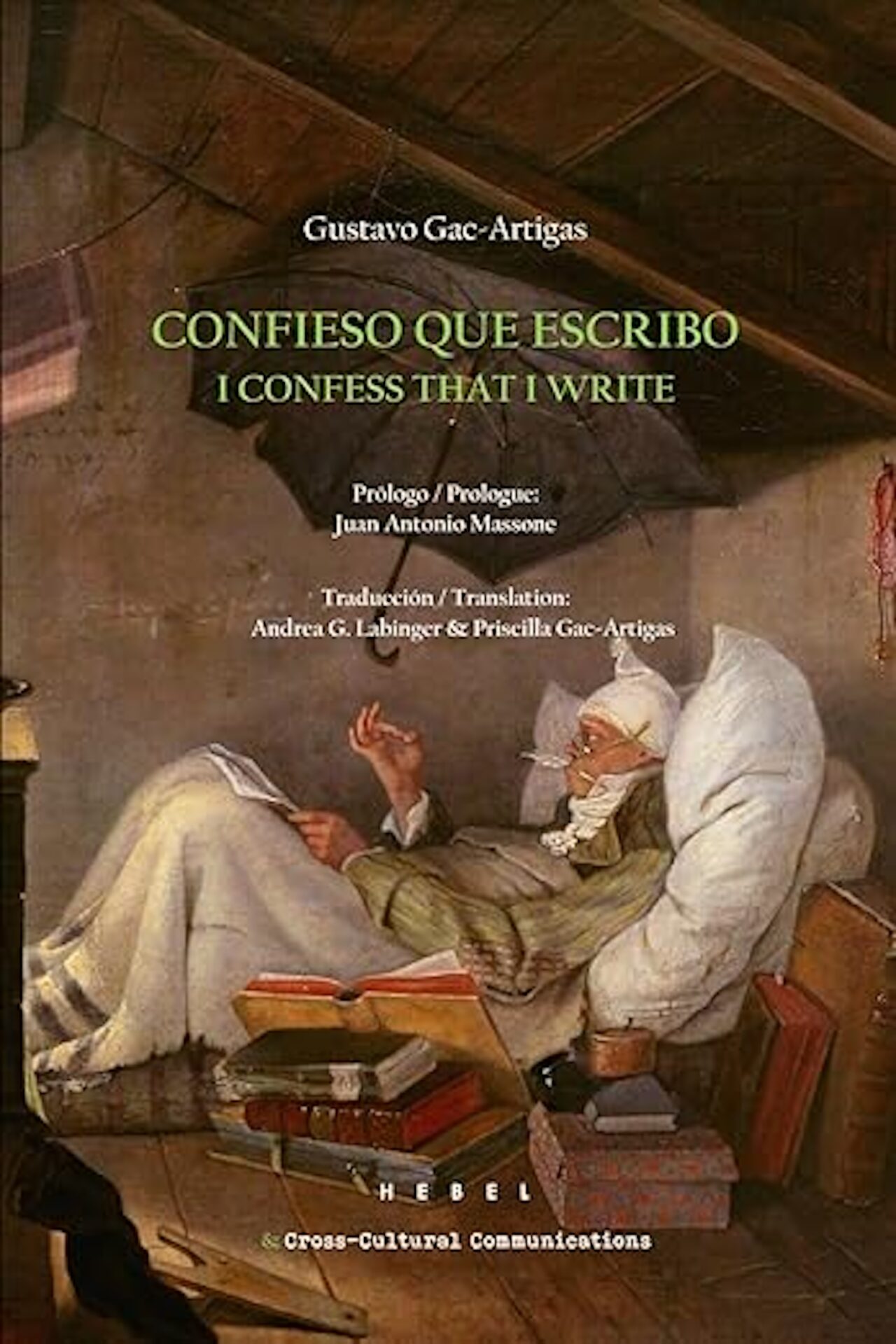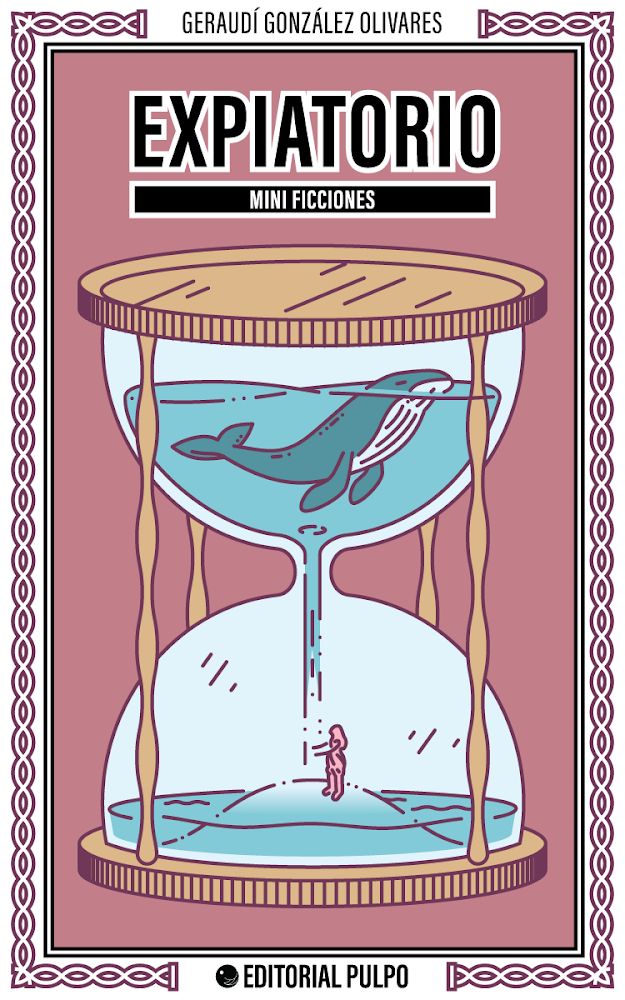Paisajes en movimiento. Gustavo Guerrero. Buenos Aires: Eterna Cadencia. 2018. 186 pages.
 When does one century end and another begin? How to examine the aesthetic, economic, and cultural changes that are produced and under what conditions they are given? Are we being witnesses to a change, or rather, are we the disobedient continuers of the blueprints that the end of the century left us? Pop culture, for example, lives since years ago as a permanent recycling of themes from our immediate past. A man like Simon Reynolds knows this well, who wrote Retromania, a book that explores the retro fever that has characterized the most recent music. Can the same be said for poetry? From what place do the Latin American poets of today write, and in what verb tense do they conjugate their imaginary universe?
When does one century end and another begin? How to examine the aesthetic, economic, and cultural changes that are produced and under what conditions they are given? Are we being witnesses to a change, or rather, are we the disobedient continuers of the blueprints that the end of the century left us? Pop culture, for example, lives since years ago as a permanent recycling of themes from our immediate past. A man like Simon Reynolds knows this well, who wrote Retromania, a book that explores the retro fever that has characterized the most recent music. Can the same be said for poetry? From what place do the Latin American poets of today write, and in what verb tense do they conjugate their imaginary universe?
Paisajes en movimiento [Landscapes in motion], by Gustavo Guerrero, introduces itself in these winding paths, that in reality function as historic folds that shape the before and the after. And it does this with all the tact and cheek that the essayist artefact allows, that is to say, with the “posibilidad de desplegarse como tanteo y experimentación, como prospección y búsqueda” [possibility of unfolding as guesswork and experimentation, like prospecting and exploration].
The book deals with three subjects: Latin American poetry, the publishing market, and the notion of national literature. These three settings (or landscapes) are crossed by the axis of time that serves as a tool for reflection and allows these apparently disparate themes to be introduced in an articulate dialogue.
The crisis of the notions of originality and novelty, the twilight of the future and the “presentist present,” find contemporary poets in a place of absolutely unstable declaration in which the past, together with their instructors and their teachings, no longer seem to make up a reference of sufficient symbolic weight in order to construct an identity, and the future breaks apart in front of their eyes with the burden of uncertainty and hopelessness. “La perdurabilidad ha sido vencida por la velocidad de las imágenes vacías” [Permanence has been swept aside by the rapidity of empty images], said Bolaño, and one wonders: Is it perhaps necessary to recover this permanence? Maybe the great challenge is how to articulate these temporary notions in order to construct aesthetic artefacts that explore and that make sense of the feeling of floating adrift that seems to cover a large part of the poetic imaginary and of today’s art in general. “Sobrevivientes en un mar abierto,” says Guerrero, “donde el mapa de la tradición (y de los tesoros heredados) resulta ya de tan escasa ayuda que ni siquiera el parricidio parece pertinente o necesario” [Survivors in an open sea, where the map of tradition (and of inherited treasures) becomes of so little help that not even patricide seems pertinent or necessary]. The list of poets with whom he converses in this first part is a treat: Paz, Montejo, Fabre, Villamediana, Casas, Raimondi, Witner.
The evaluation of the publishing market is a success in the book, since it positions in the center of the discussion the topics that deal with the economic plane of literary and artistic practice. Few people such as Guerrero (Editorial Advisor for Gallimard) know close-up the inner workings of the logic of publishing, and as a privileged witness he has witnessed the transformation of the book world in the last 30 years. During this time the publishing houses in Spain have changed in many diverse ways. Since the concentration of big publishing businesses in the hands of Spanish centers of trade that provoked an atomization of supply, to the golden age of independent publishers, which without a doubt have transformed and continue transforming the way in which we understand books so far in the 21st century. The presence of marketing as a publishing criteria attempts to convert the book into mere content “donde ni la palabra impresa ni la literatura ocupan ya una posición hegemónica,” Guerrero says [where neither the printed word nor literature no longer occupy a hegemonic position]. And he concludes, “al igual que la Iglesia, el Estado, el Partido y la Patria, también el Mercado ha acabado siendo una instancia que hace posible repensar el lugar de la literatura como una resistente, obstinada e irreductible excepción” [just as the Church, the State, the Party, and the country, the market has ended up being an authority that makes it possible to rethink literature’s place as a resistant, stubborn, and irreducible exception].
Already in the 90s nationalism, the nation, and patriotic ideals entered into a place of symbolic fragility, and the end of the century was characterized by promoting globalization as a concept that began to erase (deceptively, without a doubt) the borders that served as stages of identity. Grand historic narratives begin to come apart, the idea of nation or homeland becomes suspicious due to the innumerable historic manipulations to which they have been subject (unsuccessful policies of economic development, revolutions and dictatorships, all equally became echoes of these banners) and new generations of writers oppose this legacy through ridicule (Castellanos Moya), irony (Rodrigo Fresán), or nomadism (Rey Rosa, Bolaño). The nation, the homeland, have disintegrated in the face of the evidence, that no one no longer believes in their Olympic chants nor in their hopes, and we are beginning to produce a collective disoriented identification in which the image of disenchantment and ruin come to occupy a place of privilege. This is well known by the Cuban Antonio José Ponte who elaborates a “poética de la degradación y el derrumbe” [poetics of deterioration and collapse] as a response to the revolutionary model and Cuba’s nationalism during the Special Period. In the face of this situation, Guerrero alerts, it will be necessary to imagine “otras ideas y formas de comunidad de cara al nuevo milenio, si no se quiere volver, gradual y regresivamente, a las bases autoritarias, disciplinarias, y coercitivas del paradigma nacional moderno, con todos los peligros que esto conlleva (y que por desgracia, ya están a la orden del día en Europa y en América)” [other ideas and ways of community with regard to the new millennium, if one does not want to return, gradually and regressively, to the authoritarian, disciplinarian and coercive foundations of the modern national paradigm, with all the dangers that this entails (and, unfortunately, are already the order of the day in Europe and America)].
Guerrero places his critical perspective on the edge, both temporal and spatial, on a hinge that, when pushed, produces a fair number of unanswered questions. His methodology is to arm himself and from this apex think of the different landscape that he proposes. In fact, it is curious that he calls landscapes what anyone else would call topics, themes, subjects. And it is not coincidental: The view of observer is what determines the landscape. There is not a landscape without eyes to observe it.
Paisajes en movimiento, the sixth and magnificent book of essays by Gustavo Guerrero confirms the noteworthy place that the author occupies among those who practice this slippery and non-systematic genre, half art half science, and continues with the breach he opened in his previous book Historia de un encargo [The history of a mission], where he articulates social, historical, political, and economic aspects in order to take stock of the aesthetic reality and to offer the reader a multifaceted look at our literary history, or at least the most recent.
Gustavo Valle
Translated by Auston Stiefer







